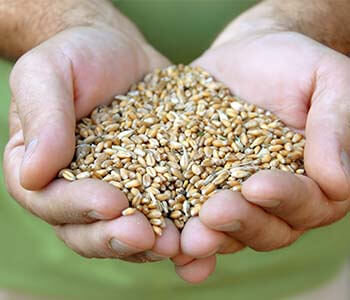Utilizing Break-Evens in Marketing
Aug 10, 2020

Marketing grain is tough. Commodity marketing is influenced by speculators in the market, global supply and demand, and weather patterns. These and other factors make if difficult for producers to understand when exactly the best time is to sell or contract their commodities. Although we cannot control the market, producers do have an opportunity to determine the price at which they will cover the fixed and variable inputs for the crop or commodity in question. This price is called your Break-Even. It is estimated that less than 25% of producers currently utilize break-even’s in marketing.
Determining and understanding your break-even costs allows producers to set a minimum price that they can market their grain in order to make a profit on that commodity. Here are couple commonly asked questions about figuring break-even costs.
What if my break-even costs are higher than the current market prices?
This is not uncommon, especially in depressed markets. Take a close look at your variable input costs. Are there any inputs that can be adjusted while not affecting yield? Look closely at the field yield history. Is there a pattern of lower yield on the field or parts of the field that need to be investigated? If possible, adjust or consider whether the chosen crop is best suited for that field or area of a field. Consult your local precision ag specialist to help build a zone map to utilize variable rate technology and place inputs on the best producing areas while working to improve the more poor areas.
Additionally, look at market history to see if there is a time when that commodity typically trends up in price. If possible, hold grain until the price reaches the number you have set, or forward contract if you feel confident in your yield history and upcoming expenses.
How do I get started with figuring my break-evens?
Start by compiling a list of your variable expenses. These may include herbicide, fertilizer, fungicide, application fees, irrigation cost, planting and harvesting costs, agronomy fees, etc. Then start to compile your fixed costs including, but not limited to, land payments or rents, insurance, machinery and equipment payments, and return to management. Once you have these, break them down into a cost per acre. Figure your average yield per acre and divide your combined variable and fixed costs by that number. This should give you a price/bushel break-even.
AgriEdge is a free program that allows you to input your costs and estimated yield to create an easy to understand break even report. More than just break-evens, AgriEdge is a concise record keeping tool. AgriEdge has the ability to create landlord billing and reports, FSA reports, field history, and much more. Great Bend Co-op is your Certified AgriEdge Partner in Central Kansas.
To see an example of a break even report from AgriEdge, Click Here.
Contact your Great Bend Co-op representative today to learn more about break-evens and marketing.
Determining and understanding your break-even costs allows producers to set a minimum price that they can market their grain in order to make a profit on that commodity. Here are couple commonly asked questions about figuring break-even costs.
What if my break-even costs are higher than the current market prices?
This is not uncommon, especially in depressed markets. Take a close look at your variable input costs. Are there any inputs that can be adjusted while not affecting yield? Look closely at the field yield history. Is there a pattern of lower yield on the field or parts of the field that need to be investigated? If possible, adjust or consider whether the chosen crop is best suited for that field or area of a field. Consult your local precision ag specialist to help build a zone map to utilize variable rate technology and place inputs on the best producing areas while working to improve the more poor areas.
Additionally, look at market history to see if there is a time when that commodity typically trends up in price. If possible, hold grain until the price reaches the number you have set, or forward contract if you feel confident in your yield history and upcoming expenses.
How do I get started with figuring my break-evens?
Start by compiling a list of your variable expenses. These may include herbicide, fertilizer, fungicide, application fees, irrigation cost, planting and harvesting costs, agronomy fees, etc. Then start to compile your fixed costs including, but not limited to, land payments or rents, insurance, machinery and equipment payments, and return to management. Once you have these, break them down into a cost per acre. Figure your average yield per acre and divide your combined variable and fixed costs by that number. This should give you a price/bushel break-even.
AgriEdge is a free program that allows you to input your costs and estimated yield to create an easy to understand break even report. More than just break-evens, AgriEdge is a concise record keeping tool. AgriEdge has the ability to create landlord billing and reports, FSA reports, field history, and much more. Great Bend Co-op is your Certified AgriEdge Partner in Central Kansas.
To see an example of a break even report from AgriEdge, Click Here.
Contact your Great Bend Co-op representative today to learn more about break-evens and marketing.